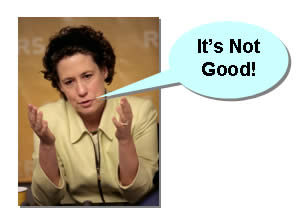
It wasn’t very fun this week listening to FDIC Director Sheila Bair give her reports on the state of the banking industry. The rising number of banks poised to fail hit the mainstream media with a vengeance, and more expensive deposit insurance is coming to your bank front door.

Yes, we’re working our way through a new Dark Ages of Banking, and the bad news has spread quickly from Wall St. and Indy Mac gunslingers to our local banks on Main Street. Like every other banking crisis, this too shall pass. However, when we finally see daylight, the world of community banking will be undergoing its most significant changes in 30 years.
Since the last banking crisis in the early 1990s, the world has changed dramatically around community banks, and it’s clear that credit issues are not the only problem today. Instead, community banks are faced with an emerging identity crisis. For this class of bank to survive 20 years from now, community bank CEOs will have to acknowledge that their age-old strategic playbook has gone stale … very stale.
In a nutshell, the traditional community bank business model has historically thrived with the following strategic identity:
Unfortunately, most of these age-old assumptions are crumbling and causing community bank executives tons of grief:
 After the last banking crisis, there was no ING Direct offering a 3.15% money market, more than 200 bps over the stable big bank rate.With remote deposit capture, moving business liquidity from ING to a checking account is just a click and a few pennies of cost away.
After the last banking crisis, there was no ING Direct offering a 3.15% money market, more than 200 bps over the stable big bank rate.With remote deposit capture, moving business liquidity from ING to a checking account is just a click and a few pennies of cost away.The Next Gen Playbook
The harsh realities mentioned above must be addressed for community banks to survive, but survive they will. I’ve been around this industry too long to believe the silly pundits who think community banks will go extinct. In the last banking crisis, I remember a McKinsey study predicting an entire industry of 10 dominant banks like in European countries. In 1998, First Union CEO Ed Crutchfield said we’d be down to 2,000 community banks by 2008. We’re actually just under 7,000. In 1999, Bank One CEO John McCoy concluded, “This is a scale business, and small banks [under $20 billion] won’t be able to compete since they won’t have access to either products or new delivery channels.” No, community banking will adapt and still be an interesting part of our industry, but not with the stale playbook. 
The next generation of community banks will be driven by these new business assumptions:
Since our last banking crisis in the early 1990s when the acronyms FIRREA and FDICIA were birthed, community banks have been able to benefit from lower interest rates that fueled a strong rise in real estate asset valuations and high loan demand. As big banks went through their awkward years of industry consolidation, community banks were a friendly alternative to the big bank mess, and experienced talent was ripe for the picking in our industry. Going forward, the game will be different and only those community banks drafting a new playbook during today’s Dark Ages will have a shot at attending the next gen community banking conferences a decade from now.
-sw